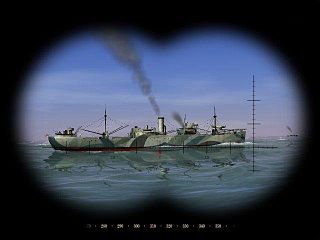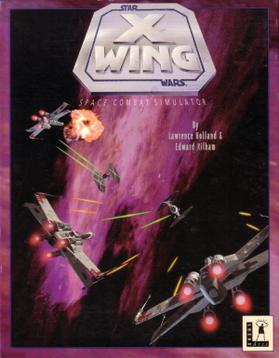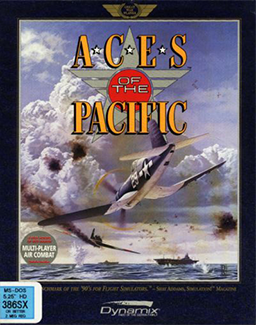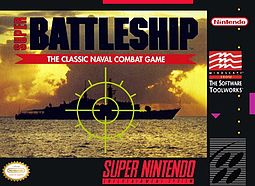
The Kriegsmarine was the navy of Nazi Germany from 1935 to 1945. It superseded the Imperial German Navy of the German Empire (1871–1918) and the inter-war Reichsmarine (1919–1935) of the Weimar Republic. The Kriegsmarine was one of three official branches, along with the Heer and the Luftwaffe, of the Wehrmacht, the German armed forces from 1935 to 1945.

U-boats were naval submarines operated by Germany, particularly in the First and Second World Wars. The term is an anglicized version of the German word U-Boot, a shortening of Unterseeboot, though the German term refers to any submarine. Austro-Hungarian Navy submarines were also known as U-boats.

The Battle of the Atlantic, the longest continuous military campaign in World War II, ran from 1939 to the defeat of Nazi Germany in 1945, covering a major part of the naval history of World War II. At its core was the Allied naval blockade of Germany, announced the day after the declaration of war, and Germany's subsequent counter-blockade. The campaign peaked from mid-1940 to the end of 1943.

Silent Hunter is a World War II submarine combat simulation for MS-DOS, developed by Aeon Electronic Entertainment and published by Strategic Simulations in 1996. The game takes place in the Pacific War during World War II, the player commanding a submarine of the United States Navy. Most contemporary US submarines and Japanese warships are featured along with some generic merchant ships.

Silent Hunter II is a 2001 World War II U-boat combat simulation published by Ubi Soft for PCs with Windows 95/98/ME.

A submarine simulator is a video game in which the player commands a submarine. The usual form of the game is to go on a series of missions, each of which features a number of encounters where the goal is to sink surface ships and to survive counterattacks by destroyers. Submarine simulators are notable for the highly-variable pace of the game; it may take hours of simulated time to get into position to attack a well-defended convoy, and sub simulators typically include an option for players to adjust the ratio of real time to simulated time up and down as desired.

Red Baron is a combat flight simulation video game for MS-DOS created by Damon Slye at Dynamix. It was published by Sierra On-Line in 1990. The game was ported for Amiga and Macintosh computers in 1992.

Star Wars: X-Wing is a space simulation video game, the first of the X-Wing combat flight simulation games series. The player's character flies starfighters, including the X-wing, for the Rebel Alliance. The narrative precedes and parallels the events of Star Wars Episode IV: A New Hope.
Plan Z was the re-equipment and expansion of the Kriegsmarine ordered by Adolf Hitler in early 1939. The fleet was meant to challenge the naval power of the United Kingdom, and was to be completed by 1948. Development of the plan began in 1938, but it reflected the evolution of the strategic thinking of the Oberkommando der Marine over the two decades following World War I. The plan called for a fleet centered on ten battleships and four aircraft carriers which were intended to battle the Royal Navy. This force would be supplemented with numerous long-range cruisers that would attack British shipping. A relatively small force of U-boats was also stipulated.

Ace of Aces is a combat flight simulation game developed by Artech Digital Entertainment and published in 1986 by Accolade in North America and U.S. Gold in Europe. It was released for the Amstrad CPC, Atari 8-bit computers, Atari 7800, Commodore 64, MSX, MS-DOS, Master System, and ZX Spectrum. Set in World War II, the player flies a RAF Mosquito long range fighter-bomber equipped with rockets, bombs and a cannon. Missions include destroying German fighter planes, bombers, V-1 flying bombs, U-boats, and trains. In 1988, Atari Corporation released a version on cartridge for Atari 8-bit computers styled for the then-new Atari XEGS.

Aces of the Pacific is a combat flight simulation game developed by Dynamix for MS-DOS compatible operating systems and published by Sierra On-Line in 1992. The game takes place during World War II. Players can choose to play a single mission or a career path in United States Army Air Forces, United States Navy, United States Marines, Imperial Japanese Army, or Imperial Japanese Navy. Dynamix followed-up the game with Aces Over Europe in 1993.
Friedrich Krupp Germaniawerft was a German shipbuilding company, located in the harbour at Kiel, and one of the largest and most important builders of U-boats for the Kaiserliche Marine in World War I and the Kriegsmarine in World War II. The original company was founded in 1867 but went bankrupt and was bought out by Friedrich Krupp. Krupp was very interested in building warships and in the time before the First World War built a number of battleships for the Kaiserliche Marine, including SMS Posen, SMS Prinzregent Luitpold, SMS Kronprinz, and SMS Sachsen. A total of 84 U-boats were built in the shipyard during the war. After the war it returned to the normal production of yachts and transports.

Steel Horizon is a turn-based strategy game developed by British studio Climax Group and published by Konami for the Sony PlayStation Portable and Nintendo DS. It was released in March 2007 in the United States for the Nintendo DS, with a later release for the PlayStation Portable in July 2007.

Wolfpack is a World War II submarine simulator published by Broderbund in the 1990s, for Amiga, Atari ST, DOS, and Macintosh. It simulates combat actions between wolf packs of German U-boats and convoys of Allied destroyers and merchant vessels in the Battle of the Atlantic.

Kurogane no Houkou 2: Warship Commander is a 2002 vehicle simulation game computer game for Microsoft Windows. It was ported to the PlayStation 2 in 2004; this port was localized and titled Naval Ops: Commander.

Super Battleship is a naval simulator video game released for the Genesis and Super NES in 1993. The game is strictly single-player and is primarily a strategy game with some real-time elements. It is based on the Battleship board game by the Milton Bradley Company.

P.T.O. IV, released as Teitoku no Ketsudan IV (提督の決断IV) in Japan, is a World War II-themed strategy for the PlayStation 2 and PC produced by Koei. It focuses on naval combat in the maritime theaters of World War II, encompassing the Pacific Ocean, Mediterranean Sea, Atlantic Ocean, and Indian Ocean, with the option of playing as one of four major maritime powers of the time: Germany, Japan, the United Kingdom, or the United States. P.T.O. IV is the latest game in Koei's P.T.O. series.

Das Boot: German U-boat Simulation is a submarine simulator game designed by Paul Butler & Rick Banks and published in 1990 for Amiga and MS-DOS systems by Three-Sixty Pacific. It was inspired by the 1973 novel of the same name and its film adaptation.
A type commander in the Kriegsmarine was a permanently assigned administrative officer in the organization of the Kriegsmarine which oversaw the development, deployment, and in some cases operational activities of the various classes of German naval vessels. Due to cross jurisdiction with the Navy group commanders, who tactically commanded all vessels at sea, some type commanders were little more than ceremonial officers who held a title with little authority. Others, such as Karl Dönitz who commanded the German U-boat force, exercised near total independence and held enormous authority, both operationally and administrative.

U-boat is a 1994 computer game developed by American studio Deadly Games for the Macintosh.

















